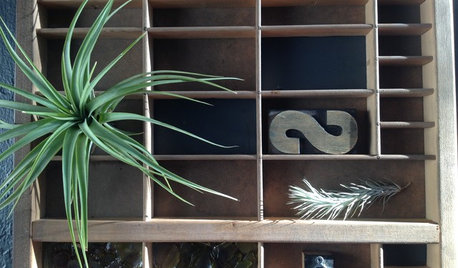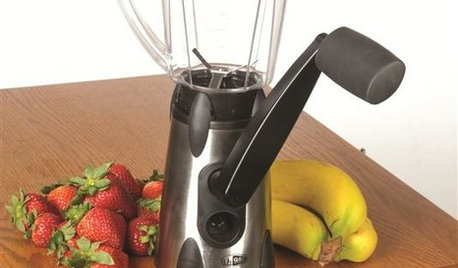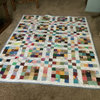Using Press n Seal
ritaweeda
12 years ago
Related Stories

DIY PROJECTSReinvent It: Grow a Mini Vertical Garden in Printing Press Drawers
Make a living wall composition from vintage finds and greenery, for an artful indoor garden
Full Story
REMODELING GUIDESSeal the Deal With Fiber Cement Siding
Chameleon-like, durable and low maintenance, fiber cement gives home exteriors of all shapes and styles a winning edge
Full Story
KITCHEN DESIGNUsing White Marble: Hot Debate Over a Classic Beauty
Do you love perfection or patina? Here's how to see if marble's right for you
Full Story
BATHROOM DESIGNWhat to Use for the Shower Floor
Feeling Good Underfoot: Shower Tiles, Mosaics, Teak Slats and Pebbles
Full Story
KITCHEN DESIGNWhat to Know About Using Reclaimed Wood in the Kitchen
One-of-a-kind lumber warms a room and adds age and interest
Full Story
FEEL-GOOD HOME12 Very Useful Things I've Learned From Designers
These simple ideas can make life at home more efficient and enjoyable
Full Story
REMODELING GUIDESWhen to Use Engineered Wood Floors
See why an engineered wood floor could be your best choice (and no one will know but you)
Full Story
MATERIALSShould You Use Composite Timber in Your Landscape?
This low-maintenance alternative to wood is made from varying amounts of recycled plastic. Consider it for decks, fences and more
Full Story
COLORCooking With Color: When to Use Gray in the Kitchen
Try out Trout or shake up some Martini Shaker gray for a neutral-based kitchen that whispers of sophistication
Full Story
ACCESSORIESEasy Green: Cut Electricity Use With 15 Unplugged Home Devices
Crank up the energy savings, courtesy of household items that come into power the old-fashioned way: manually
Full StoryMore Discussions









msmeow
Robbi D.
Related Professionals
Eagan Furniture & Accessories · Marietta Furniture & Accessories · Queens Furniture & Accessories · Reston Furniture & Accessories · Newton Furniture & Accessories · Clark Furniture & Accessories · Ives Estates Furniture & Accessories · Nixa Furniture & Accessories · Aspen Hill Interior Designers & Decorators · Fort Smith Interior Designers & Decorators · Addison Flooring Contractors · Randolph Flooring Contractors · Hilton Head Island Furniture & Accessories · Racine Furniture & Accessories · Northbrook Furniture & Accessoriesmsmeow
K8Orlando
ritaweedaOriginal Author
jennifer_in_va
magothyrivergirl
nanajayne
mzstitch
Robbi D.
magothyrivergirl
karpet
cindykg23
karpet
magothyrivergirl
ritaweedaOriginal Author